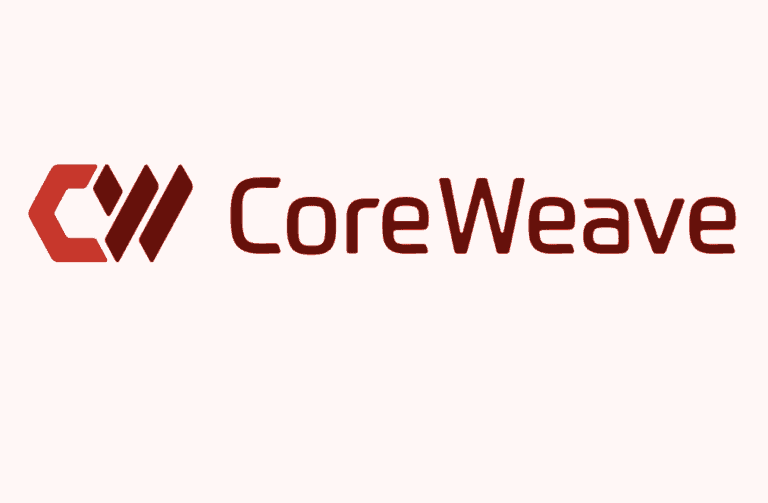Big tech companies are investing heavily in CoreWeave, the most prominent “GPU-as-a-Service” player in 2025. The most recent customer of note is OpenAI, while Microsoft is cancelling some contracts. What’s going on?
We wrote at length back in October about CoreWeave, which had appeared on Cisco’s radar at the time for a possible investment. With a recent acquisition of Weight & Biases, a partnership with Pure Storage, and an IPO coming up, the future seems bright for CoreWeave, at any rate.
Yet things are storming around the GPU provider. Microsoft is said to be so dissatisfied with CoreWeave that it has terminated some agreements. As we reported last week, this decision was made based on missed deadlines and delivery problems. It could lose CoreWeave billions, as Microsoft had committed $10 billion within the next five years.
Contracts for billions
Last Monday, the news cycle again brought upbeat news: OpenAI signed a contract with CoreWeave worth $11.9 billion. The GPU provider will also hand over $350 million in shares to OpenAI once the IPO is complete. In total, CoreWeave is aiming for a market cap of $35 billion.
Those looking purely at the numbers have more reason to rejoice. For example, annual sales shot up from $228.9 million (2023) to $1.92 billion in the past calendar year. On net, however, it still posted a loss: $863.4 million in 2024 versus $593.7 million the year before.
OpenAI versus Microsoft
OpenAI is in dire need of more GPU compute. Capacity has “run out,” as CEO Sam Altman revealed. This may have already constrained the company’s ambitions in terms of total training time and capacity for experimentation. It would explain why GPT-4.5, conspicuously not called GPT-5, isn’t the major improvement its apparent model size would suggest. CoreWeave may well be the key to new successful LLM innovations and free up more capacity for OpenAI.
Incidentally, The Next Platform suspects that the computational power at CoreWeave for OpenAI is not intended to be used for AI training at all, but inferencing instead. The company running its models via ChatGPT and the OpenAI API on external hardware might free up enough space on its own servers for new training.
The same article speculates that the bond between OpenAI and Microsoft is eroding further. The relationship has seemingly cooled after the latter invested around $10 billion in OpenAI by 2023. Microsoft is reportedly building AI models of its own to compete with OpenAI. For its part, OpenAI is said to be gradually moving away from Azure, which it (it seems) had a 50 percent discount on for GPU capacity.
CoreWeave itself
The difference between CoreWeave’s GPU cloud and Microsoft’s Azure is huge. Other than the basic ability to house AI training and inferencing, there are no similarities. The Azure stack is complex and focused on flexibility, while the public cloud concept of it just being “someone else’s computer” is highly similar to what CoreWeave does. If we simplify matters, we can say CoreWeave basically rents out a mountain of Nvidia GPUs, and it leaves clients to do as they please. It charges on a per-hour basis, regardless of whether GPUs are in use or loaded during a workload. This is often not the case, as the idle time for a single GPU in a multi-GPU AI workload can be huge if not accompanied with low-level tricks performed by an AI lab like DeepSeek.
However, there is more to what CoreWeave offers. First, there’s the up-to-date nature of its service: because CoreWeave is an Elite Cloud Services Provider for Nvidia (the first one, in fact), access to the fastest Nvidia chips is available sooner than anywhere else. For example, the Nvidia GB200 NVL72 was introduced to CoreWeave back in early February. A second differentiating factor for CoreWeave is that it can dedicate its own infrastructure almost entirely to GPU clusters. Sure, there are also CPU nodes (CPUs are also needed as conductors of workloads with many GPUs), but CoreWeave’s raison d’être derives from its large AI computing capacity, and that leans firmly on Nvidia’s GPUs.
This leads CoreWeave’s infrastructure to follow Nvidia’s blueprint in its entirety. For example, Node Pools with InfiniBand support (Nvidia’s own alternative to Ethernet for GPU interconnectivity) take full advantage of Nvidia hardware and are incompatible with GPUs from AMD and Intel. CoreWeave software such as the Fleet Lifecycle Controller (FLCC) for tracking server health, among other observability functionality, is also added to the overall package on offer.
These are features that some parties may prefer to implement themselves. We can imagine that OpenAI, like DeepSeek, has its own optimizations for GPU usage. However, the fact that CoreWeave is so Nvidia-specific benefits large users. CoreWeave’s Kubernetes Service (CKS), for example, is meant to yield Kubernetes flexibility at bare metal speed, something much less straightforward when your attention needs to be spread across multiple GPU vectors. OpenAI could leverage this for AI inferencing in a scalable way, with still impressively low latency.
Conclusion: delivering on promises
The theoretical benefits of CoreWeave are great. Yet, it has found a way to disappoint Microsoft somehow. The question is whether the AI hyperscaler is as scalable as it suggests. With CoreWeave as the main GPU-as-a-Service player, its partner Nvidia has an interest in ensuring that the former’s image is not damaged in the long term. Thus, OpenAI may become the beneficiary of Microsoft’s frustrations as CoreWeave seeks to retain the lucrative contract it has signed without alteration.
Also read: Why Cisco is interested in AI success story CoreWeave
